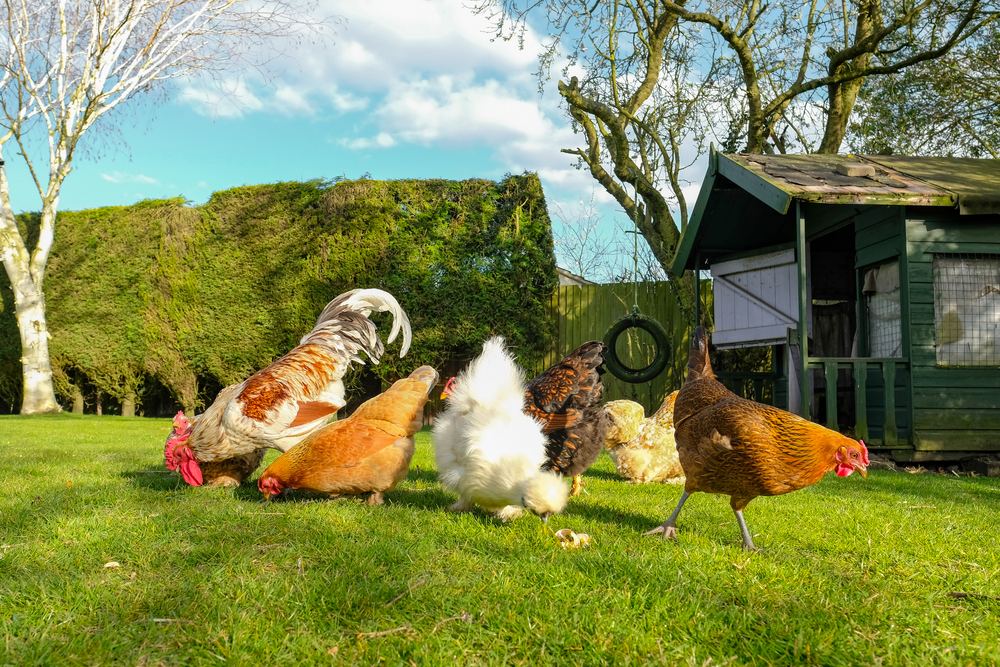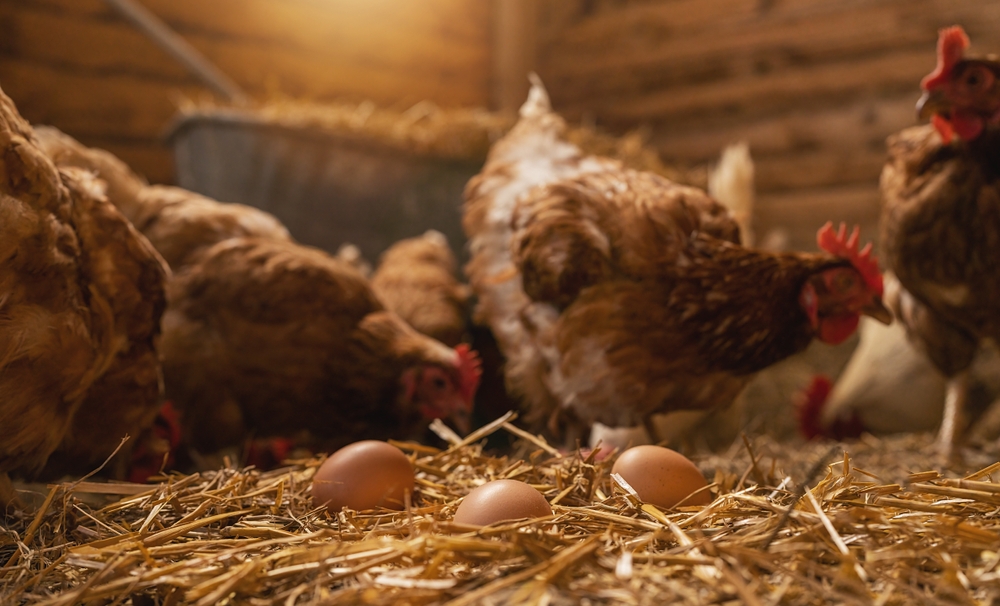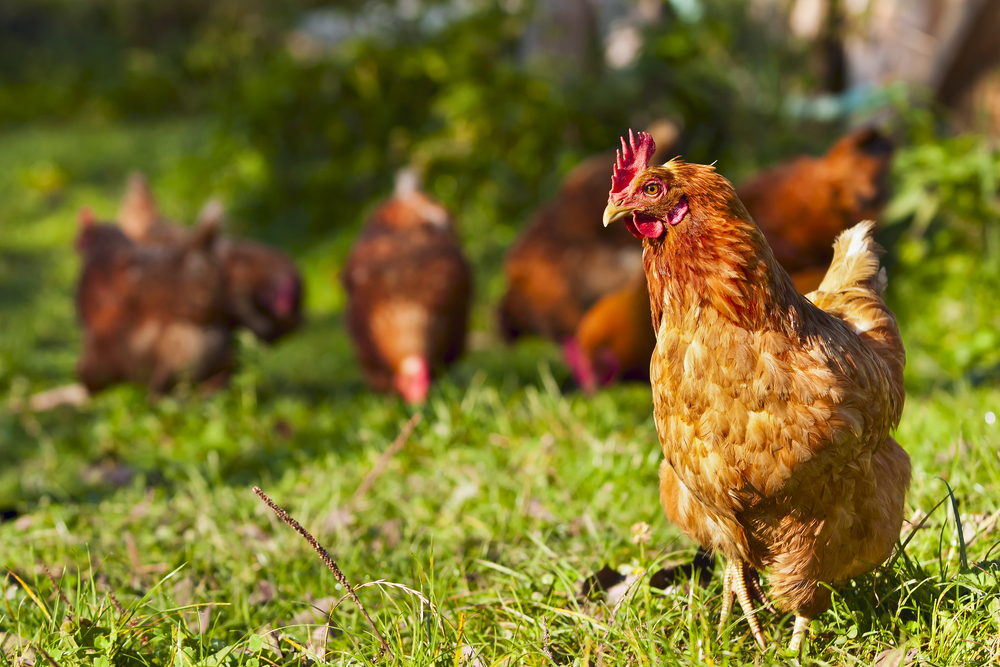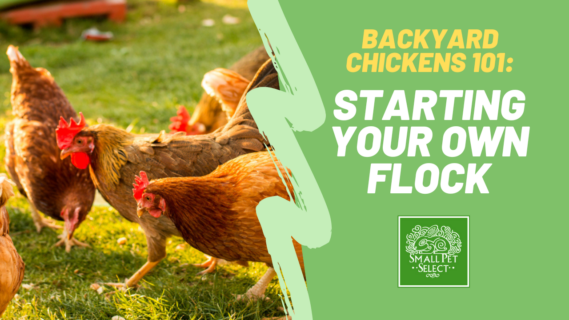Have you seen your neighbor’s awesome backyard chicken flock? Have you been dreaming of farm-fresh eggs? This blog is for anyone whose interest has been caught by feathered friends.
As a beginner, or someone considering this adventure, you need to start with the basics. Let’s start with chicken breeds and then we'll talk about what they need and the work involved in caring for a chicken flock.
How To Choose Breeds For Your Chicken Flock
Before we dive into all the fun, make sure that you live in a place that allows backyard chicken flocks. Certain places aren’t keen on having chickens as neighbors though it’s hard to understand why! Check out any community or city rules before you get too excited with us.

When it comes to choosing which chickens are right for you, consider these factors and decide what’s most important to you:
- egg production
- cold weather hardiness
- size
- temperament
Egg Production
Some of the best chicken breeds for egg production are:
- Leghorns
- Rhode Island reds
- Australorp
- Buff Orpington
- Plymouth Rock
Cold Weather Tolerant
Chickens are native to warm climates (the jungles of Southeast Asia). However, since they were domesticated, certain breeds have been bred to survive colder climates. If you live somewhere north then some breeds to consider for your chicken flock are:
- Black leghorns
- Silkies
- Barred Plymouth Rocks
- Brahmas
- Wyandottes
Size
Usually, The larger the bird, the larger the egg. Some of the largest chicken breeds are:
- Jersey Giants
- Cochins
- Orpingtons
These breeds of course need more space than smaller chickens. If you’re low on space or looking for a small breed, bantam hens (also known as miniatures) are only ¼ of the size of a regular chicken. They lay small eggs but they’re still certainly usable!
Temperament
If you have children that will be helping with the chicken flock then temperament will be very important! Some breeds have been bred to be more submissive and therefore more easygoing with children.
Chicken breeds with a docile temperament:
- silkies
- buff orpingtons
Hopefully, that got the ball rolling and you’re able to have a good idea of what to consider. There are over 50 different chicken breeds. You can spend a lot of time learning about each one. Chickens also lay different colored eggs! Pink, green, brown, blue, and white are all egg colors from different chicken breeds.
Easter eggs aren’t so far off from nature after all!
The Coop For The Chicken Flock
Time to set up the crib! Your chicken flock will need a generously sized chicken coop as well as additional outdoor space. You need at least 4 square feet per chicken for both the inside coop and the outdoor run.

For example, if you have 5 chickens, your chicken coop needs to be 20 sq. feet and they need an additional outdoor run that is at least 20 sq.
If you don’t have an outdoor run then you need 10 sq. feet of space for each chicken. If you live in a very harsh climate you’ll need that larger inside space as well.
Overcrowding your chicken flock leads to serious issues:
- aggression among the chickens
- Chickens at the bottom of the pecking order may have limited access to food and water.
- The coop will get dirtier faster (more bacteria) with an increased risk of parasites making the birds sick.
A chicken coop also needs:
- nesting boxes
- roosting bars (where chickens perch to sleep)
- space for a feeder and water
- vents for air circulation
- bedding
Feeding Your Chicken Flock
When it comes to chicken food, chicken lovers preach the four G’s: Grains, Greens, Grit, and Grubs.
Grains
Chicken Feed gets your chickens their grains in the form of pellets. This is the largest part of their diet (70%) so it’s important to make sure you’re getting a quality chicken feed!
From birth to 18 weeks chickens need Starter Feed. After 18 weeks, they can move to Layer Feed.
Greens
Your chicken flock needs access to grass and/or greens every day! This improves their health which improves their eggs! Some greens that are great for chickens are:
- lettuce
- chicory
- chard
- spinach
- turnip greens
- cress
- rocket
- mustard greens
- kale
- clover
Grit
Chickens don’t have teeth! They have a gizzard. Chickens need soluble grit year-round to help them digest their food.
Just like we start digesting our food and breaking it down as we chew, they need this grit to help tear up their food and break it down. Shell grit or crushed oyster shell is what you need for soluble grit (grit that dissolves in the digestive system). This also gives them calcium which is important for strong bones and strong eggshells!
Free-range chicken flocks are pecking at tiny rocks, pebbles, and sand as they go about their day. This is insoluble grit (grit that doesn’t dissolve) which helps grind food in the gizzard.
Grubs
Chicken flocks need access to the outdoors so they can find insects! Let them forage for insects for at least an hour a day. This is a great protein boost as well as a fun time for the chickens!

Keeping Your Backyard Chickens Safe
You need to secure your coop from predators. Think about overhead predators and neighborhood dogs.
It’s also important to raise your coop up off the ground. Chickens should be able to fit underneath the coop. This will help keep other animals from living under your coop.
A well-built coop and smart setup will save you a lot of time and money and give you a happy and healthy chicken flock!
Are you overwhelmed or excited to learn more? Backyard chickens are a lot of fun and an addition to your household that will keep you busy. But certainly one that gives back!
We are not veterinarians, and none of our information should be construed as veterinary advice.
Before adding any new product, please consult your exotic veterinarian. If your pet is acting unwell and you have concerns for their well being, please contact your vet immediately.





